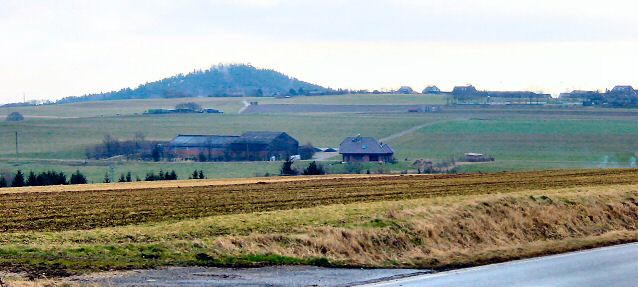D Company, 2nd Ranger Battalion

My battalion (2nd Rangers) was in the Huertgen forest from October 1944, I believe, through Febr. 1945.

Photo: Patrol of the 2nd Platoon, Company C, 2nd Ranger Battalion,
moves down a road near Heimbach, Germany ( U. S. Army photograph).
We were either in the forest or in reserve areas near the forest somewhere near Eupen or Verviers.
I was never certain of exactly where we were unless we were actually dug in in proximity to the forward positions.
We were a special assault force trained to carry out specialized but critical operations.
However in this campaign, part of the time we must have been some sort of quick action reserve of some sort. I know that I was given orders to prepare for a reconnaissance in force of an area around Lammersdorf, Simmerath, and Kesternich and to go across the Roer to infiltrate the Dams on the Roer. Then suddenly we were ordered up to help hold Vossenack when the units holding the town suddenly panicked and the Germans were about to exploit the situation I guess. Then we were suddenly withdrawn from Vossenack and went back to our forest area. It was from here that we were ordered late in the day of Dec 6 to attack the hill in Bergstein.

Hill 400 as seen from Brandenberg
I was a leader of the ranger patrol that made a reconnaissance of Hill 400 before the attack was launched. I was in the assault and remained on the hill for most of the time during the defense. It was about as bad, I suppose as anything could be and at times I was sure we would be overrun. We had very good men, in fact quite extraordinary I believe, and we managed to maintain possession of that key terrain feature. To those of us who survived it was a monumental fight. To the rest of the Army and to history, I suppose, it is relatively unknown and for most a forgotten incident.
It is interesting to find anyone interested in this particular intense battle. I as well as my comrades certainly appreciate your interest. I enjoyed your photos of the Kall trail and wonder at what any commander was thinking when he selected that thing as a main supply route.
In 1984 I encountered a group of officers from the United States Army First Infantry Division 16th Infantry Regiment who were studying the Schmidt campaign. I met them at the church in Bergstein. They had been brought there by their battalion commander to study the campaign because apparently the battle is studied by the army general staff and the command school. I judged from some of their comments that the school was highly critical of the whole Huertgen campaign and it is studied in order to point out how not to conduct an operation. I do not know for certain that it is studied for its negative aspects, that is my judgment from some of the young officers comments and from other criticisms which I have read. I am not a general so of course have no experience at that level of military operations.
I did however drive from Simmerath to Schmidt and that route seemed to be an ideal approach for an armored task force with few forest conditions. I had been sent in 1944 by my battalion commander to make a reconnaissance of a possible route for a patrol into Simmerath so perhaps something was planned in November for some sort of operation in that area. We never did carry through on the patrol. Obviously for some reason it was called off.
I also was told at one time to prepare to lead a patrol to take some engineers in to the dams in an attempt to control the water I guess. We started a preliminary map and approach study but then again this mission was cancelled in November. Later in 1945 Feb.; we were ordered to plan to move on the dams with a larger force and I made some reconnaissance to find routes across the Roer but again this was called off. Finally in Feb. or March 1945 I took a 15 man patrol at night across the Roer through the German lines and set up a strong point on the other side of the river in the forest beyond the dams. The next day two of the man from my patrol led the battalion across and through the forest to join us... I think most of the enemy had withdrawn although we did encounter posts during the night but we managed to get past them without being detected so our presence the next day was a big surprise. The area was heavily mined with many obstacles but our battalion move through with no casualties.
I cannot get over how beautiful that country is in peacetime. It is some kind of a park.
~~~Ken McClure~~~

July 8, 1924 - † June 13, 2010

